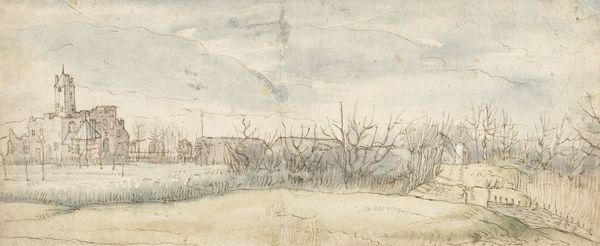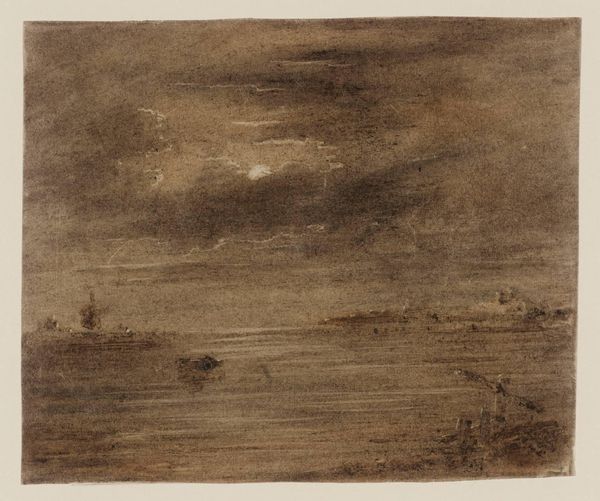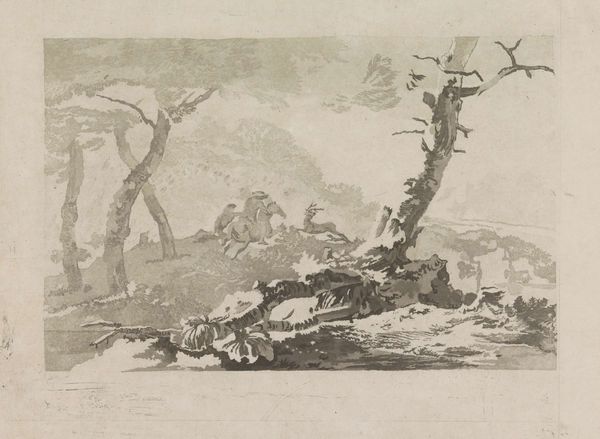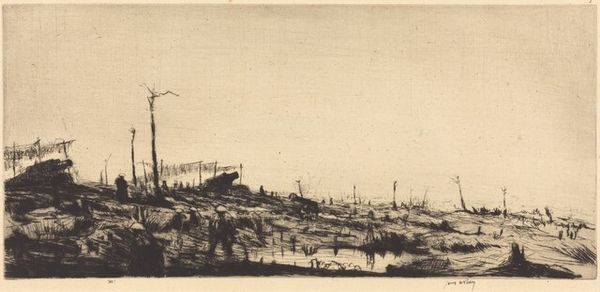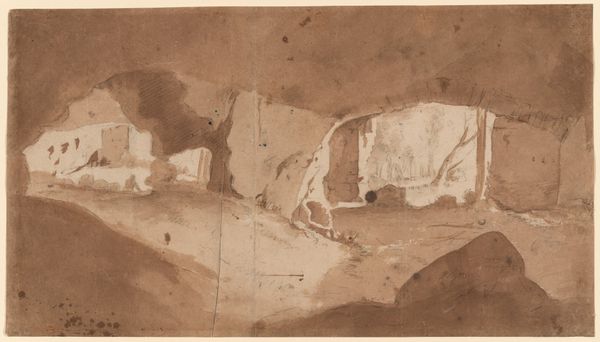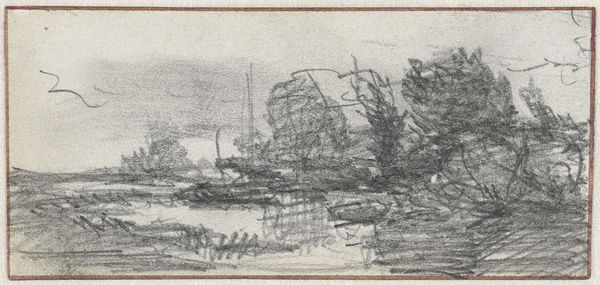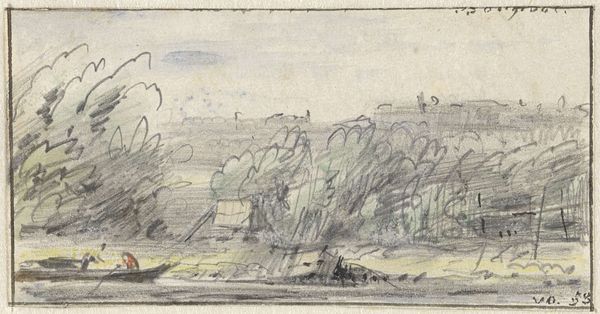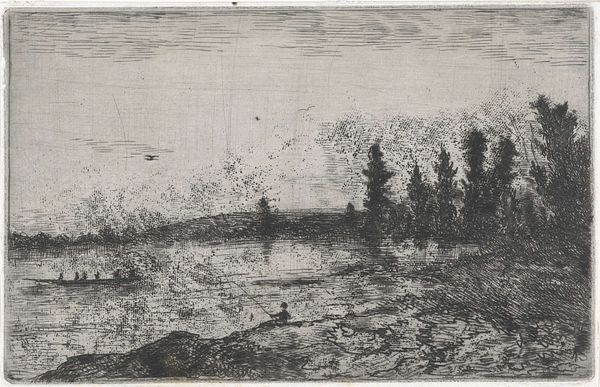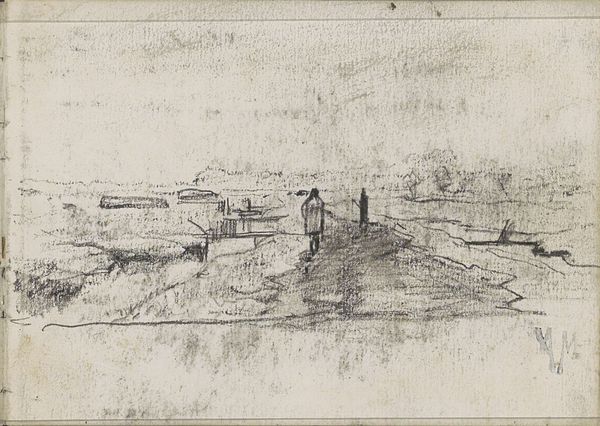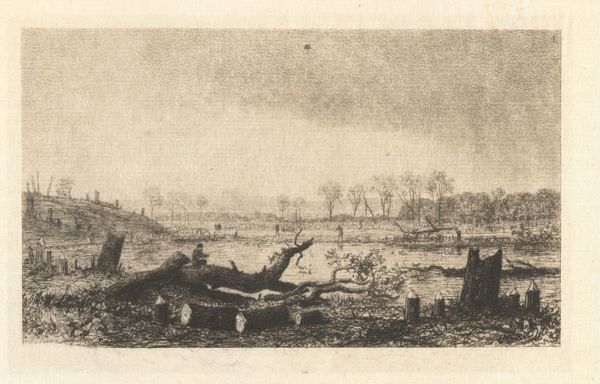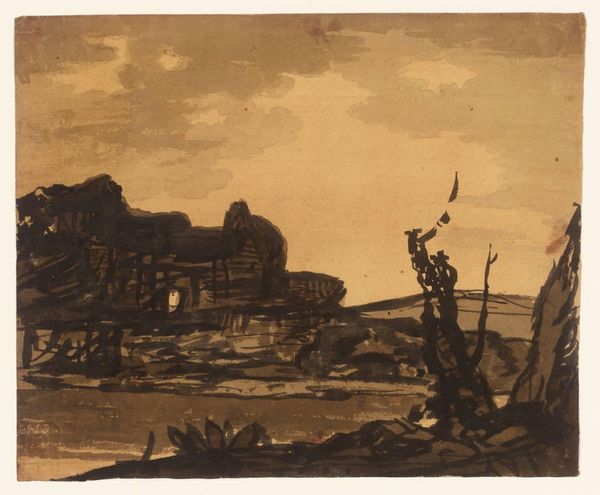
Dimensions: 24 x 33 cm
Copyright: Public domain
Curator: Today, we're examining "Gypsy Camp," an 1864 oil-on-panel work by Silvestro Lega. Editor: The somber color scheme and rough brushwork immediately suggest transience. It feels like looking at the aftermath of a storm, or perhaps a hasty retreat. Curator: It’s quite possible that the materials employed reflect this immediacy, painted en plein air to quickly capture the atmosphere and light, giving form to the temporary encampment itself. Consider how the muted ochres and browns serve to subdue any romanticized notions of nomadic life. Editor: Right. The way Lega manipulates the oil paint is compelling. You can almost feel the coarse canvas beneath the thin layers of pigment; I wonder if the rapid application of the medium mirrors the hurried nature of these people’s lives and the materiality reflects the poverty of such a camp, don't you think? The roughness in application mirrors roughness in the reality it presents. Curator: Perhaps. One could also say that Lega, with his careful arrangement of shapes and subtle variations in tone, builds an intricate composition that alludes to the Romantics’ penchant for depicting humble existences in idyllic natural environments. I note the canvas serves as an organizing principle itself, dividing areas of shadow and of diffuse light which guides the eye and imbues structure throughout. Editor: But how much control did the Romani themselves have over the materials they could use to build those shelters, right? That crude timber must've been a real material constraint, and its bare presence speaks to how different people's experience of "landscape" is – whether you own the soil or just stop on it briefly, and construct what protection from wind you can find available there. Curator: Fair enough; perhaps the artwork doesn't idealize existence so much as it uses artistic choices to capture an inherent balance between survival and belonging. We should appreciate the technical expertise evident in how Lega employs the limited tonal range to create an effective sense of depth and dimension within such humble structures. Editor: Well, from its apparent earthiness and that textural richness which emerges directly out of rough manufacture, it tells such complex tales! It is also great how materiality itself provides a portal into human history here—beyond form. Curator: A valuable observation, certainly underlining how multifaceted the act of viewing is; that artful creation serves the historical documentation purposes well is, for me, particularly pertinent.
Comments
No comments
Be the first to comment and join the conversation on the ultimate creative platform.
